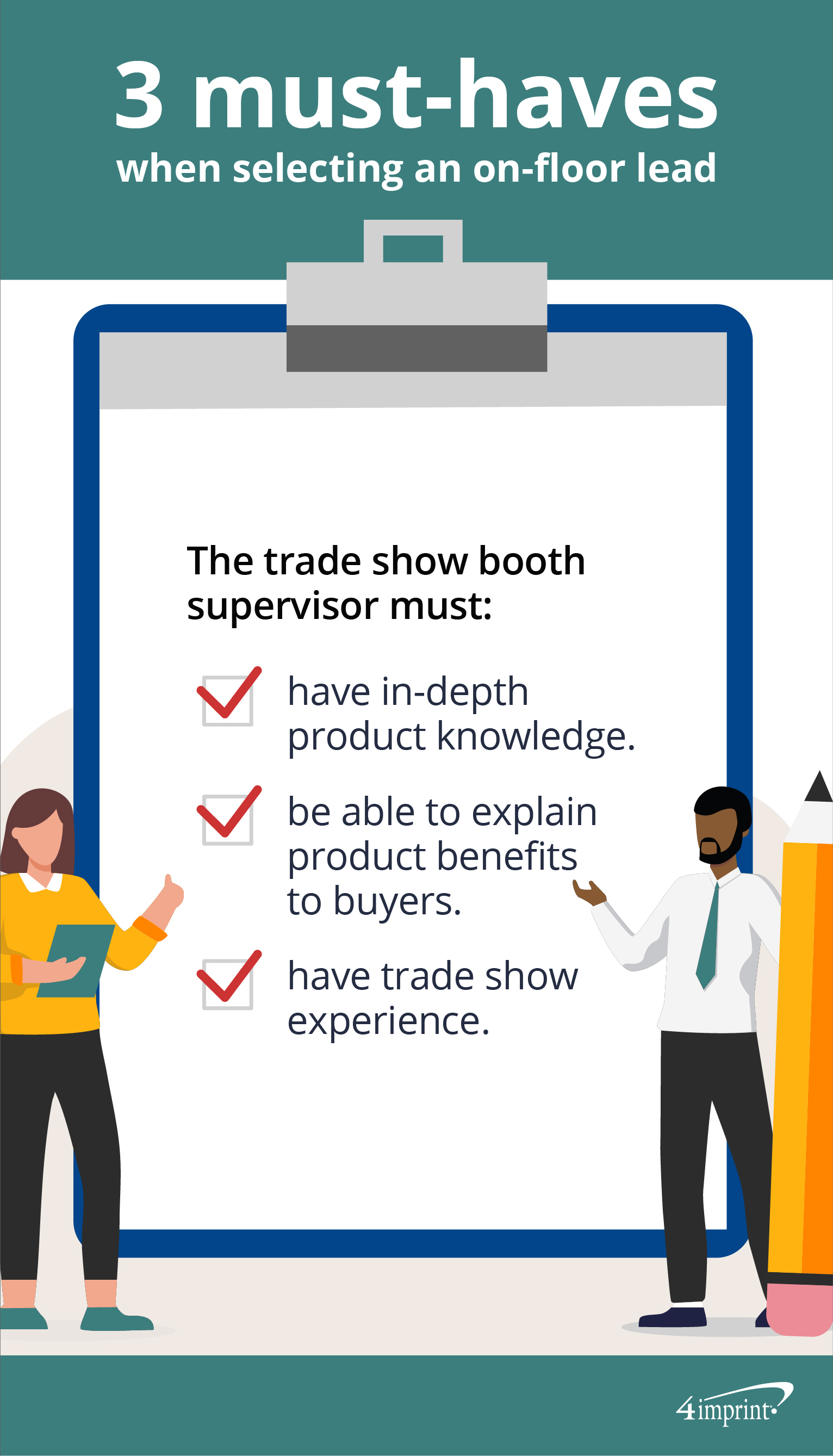5 remote trade show management tips
- Designate an on-floor lead
- Use mock scenarios to train staff
- Be detailed about details
- Touch base regularly
- Debrief
Being responsible for a trade show exhibit’s successes and failures without physically being there to manage it brings new challenges and opportunities. There are logistics to track, leads to generate and staff to manage. Trade shows are the second largest source of B2B revenue for companies.

Planning ahead and coordinating to make sure your company generates as much revenue as possible is crucial. As Brian Pleet, Senior Client Partner with the Business Development Bank of Canada notes, “Your success at a trade show is determined before it even starts.” We offer ideas to make remote booth management as smooth and easy as it can be.
Designate an on-floor lead
Designate one in-person team member to act as a “booth supervisor.” They will be the go-to person responsible for making decisions on the spot. Choose someone who has in-depth knowledge about your product and can clearly explain the benefits to potential buyers. It’s also good to choose someone who has prior trade show booth experience (even if they’ve never been a ‘booth leader’ before).

Thank your booth leader after the show with a staff appreciation gift like a travel tumbler or an umbrella. Or give a warm fleece hoodie that they can wear if the venue is cold.
Use mock scenarios to train staff
Before the big day, make sure each team member attending the trade show is thoroughly trained on expectations. Untrained staff can result in a It’s important that each person knows how to run demonstrations, give your elevator pitch and answer hard questions.
Set up mock trade show sessions to help prepare staff attending the event in-person. Set up your booth exactly as it will look at the event and then pretend to be a potential buyer. Enlist one or two other people to play the part of potential buyer. This provides fantastic real-life training scenarios, preparing your booth staff for anything.
Be detailed about details
A trade show booth comes with multiple parts and pieces—from the right table cover to the right giveaways to the right products. Not to mention the layout directly contributes to the right look and feel of your exhibit. Eliminate room for error with a foolproof plan that ensures all inventory arrives, is set up correctly and gets brought back where it belongs:
- Fill a comprehensive binder with step-by-step pictures and instructions
- Create a detailed spreadsheet with the needed booth elements
- Put photos inside every crate and box that show individual components and proper packing
On-site staff can compare everything against the photos and checklist to ensure your booth is ready to go.
Touch base regularly
Keep track of helpful metrics in real-time, like how many leads were generated and which staff members are performing exceptionally well. Use an online lead tracking system to check in throughout the day. Or send a quick text to on-site staff for an update.
You can also ask staff to provide an end-of-day report outlining how many leads generated (compared to the goal) and how many giveaways were distributed. Staying current throughout the event can help you quickly identify what’s not working so you can fine-tune your strategy.
Debrief
Making sure your company’s trade show investment meets its objectives is a vital part of trade show management. That’s where a debrief is crucial, especially when you’re unable to physically be there.
Obtain staff feedback on everything from booth traffic to exhibit setup. Send each team member a survey and/or meet with them for their feedback. You can use your staff’s insights to make improvements for next time. Celebrate your team’s hard work and success with thoughtful staff appreciation gifts, such as a coaster set, accent crystal tower award or vacuum tumbler with straw.
Remotely manage, without a hitch
Remotely managing a trade show booth offers exciting challenges. From booth setup to lead interaction, long-distance booth management can go smoothly.
Key Takeaways
- Designate one “booth supervisor”
- Train with mock scenarios
- Regularly touch base
- Debrief
